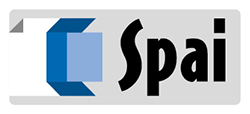The most beautiful silence you’ve ever listened to
A few weeks ago, a world leader in the pharmaceutical packaging sector issued the official version of a digital product, namely a self-explanatory course intended for the foreign purchasers of a Primary packaging line.
I was the appointed project manager of this digital product for technical training and with my team at SPAI and other suppliers, we took part in all the stages of its design and implementation. An interesting experience from many points of view, that enriched my personal background and led to some interesting thoughts on the professional development of those who carry out our work in the field of validation and above all in technical communication.
This digital training product was released during a videocall with the end customer, the product developers and two trainers, ready to take action in the event of problems.
The greetings and introductions were followed by a brief explanation on the use of the tool, after which the customer shared the screen, disconnected the audio and started exploring the course completely autonomously. I found it fascinating and thrilling to see how these people scrolled through and interpreted the content, paused on certain points, played all the videos, even the ones that were replayed due to chronological reasons, carried out the tests and sometimes went back to make sure they had understood the most complex steps. This was a test for us as well, indeed we were verifying in real time all the concepts, the terminology and steps that we had been working on for weeks.
After an hour and a half of concentrated silence, with the only noise coming from the cicadas buzzing outside my window, one of our trainers noticed an error in the answer to a question of an intermediate test. We therefore took the opportunity to break up the long silence to ask the end customer: “Is everything OK?” We then explained we had noticed one of the answers was wrong. “Is there any concept that is not clear? Are the questions too difficult?”, we asked.
The answer was brief: “No, everything is clear, both the content and the level of the questions, it was a very good job!”
After that, another hour of silence ensued, during which we were further able to ascertain how our ‘digital creature’ was being tested and was able to meet the expectations. At that moment I realised how that silence was proof of a job well done on our part. No question, no request for further explanations, no doubts. The two trainers stood by, watching, and never needed to intervene. Yes, it was the most beautiful silence I have ever listened to and it was a source of great pride, because if a self-explanatory digital course achieves its purpose it is thanks to the women and men of the development team and the Board who worked on it.
All that leads me to some personal thoughts on the digital world.
My personal thoughts made me reflect on the digital transformation that our world has been going through in recent years, which aims at transforming processes that are normally carried out in person into automated activities, carried out remotely. I’d like to steer clear of the philosophical discussion on how machines steal people’s work, leaving this theme and the pleasure of delving into it to Asimov’s fans, a cohort I also belong to. The pandemic has certainly considerably boosted this transformation, but it had actually already been underway for some time. The digital approach, and specifically concerning Learning Management Systems (LMS). This is a very valuable and current approach to information. Being able to manage the entire training process on a software platform, from the creation and design of the courses to its delivery to users and monitoring the training results is a very powerful tool compared to conventional ones.
These tools offer many advantages, but I believe two of them are more significant than others, because they meet ever more important human needs.
The first is the possibility of accessing the training material as and when the user decides. The individual decides when and at what pace to follow the digital course. Having to attend the course at a scheduled time in a given place used to force us to organise our day around that event, but now, after putting your children to bed and kissing your wife good night, you can devote yourself to the course while sipping iced tea and sitting comfortably on the terrace, or cradling a hot mug of tea in front of the fireplace, depending on the season.
The second aspect, an even more human one, is laziness. Alas we all suffer from the ‘energy saving’ syndrome, although I’m not talking about gas or electricity, but I mean the DNA of every living being – if it’s possible to save our efforts, we’ll certainly do so. The same principle applies to training – when faced with a book or video, most people will opt for the video, because it is easier and quicker. This technology indeed leverages this principle.
From the point of view of product management and development, however, I must say that there isn’t much difference compared to conventional methods. Yes, obviously, some tools change, new ones are added, but the use of new tools should not be a limit for those who create the products and those who use them.
If we managed to switch from coal to petrol and then to nuclear energy, I think we can learn to switch from pen to video camera and, now, to virtual reality. Sure, these are interesting issues and are still in the making, the very need for ‘human energy saving’ I mentioned earlier sometimes makes us try and avoid what is new and hide behind what we know, but that’s a whole different story.
Another aspect to take into account is information management. When it is necessary to describe the use of a continuously evolving system, that is also more often than not customised for that given client, there is a high risk of having to re-create the training product each time, with rising production costs. But that’s also something we’ll talk about another time.





